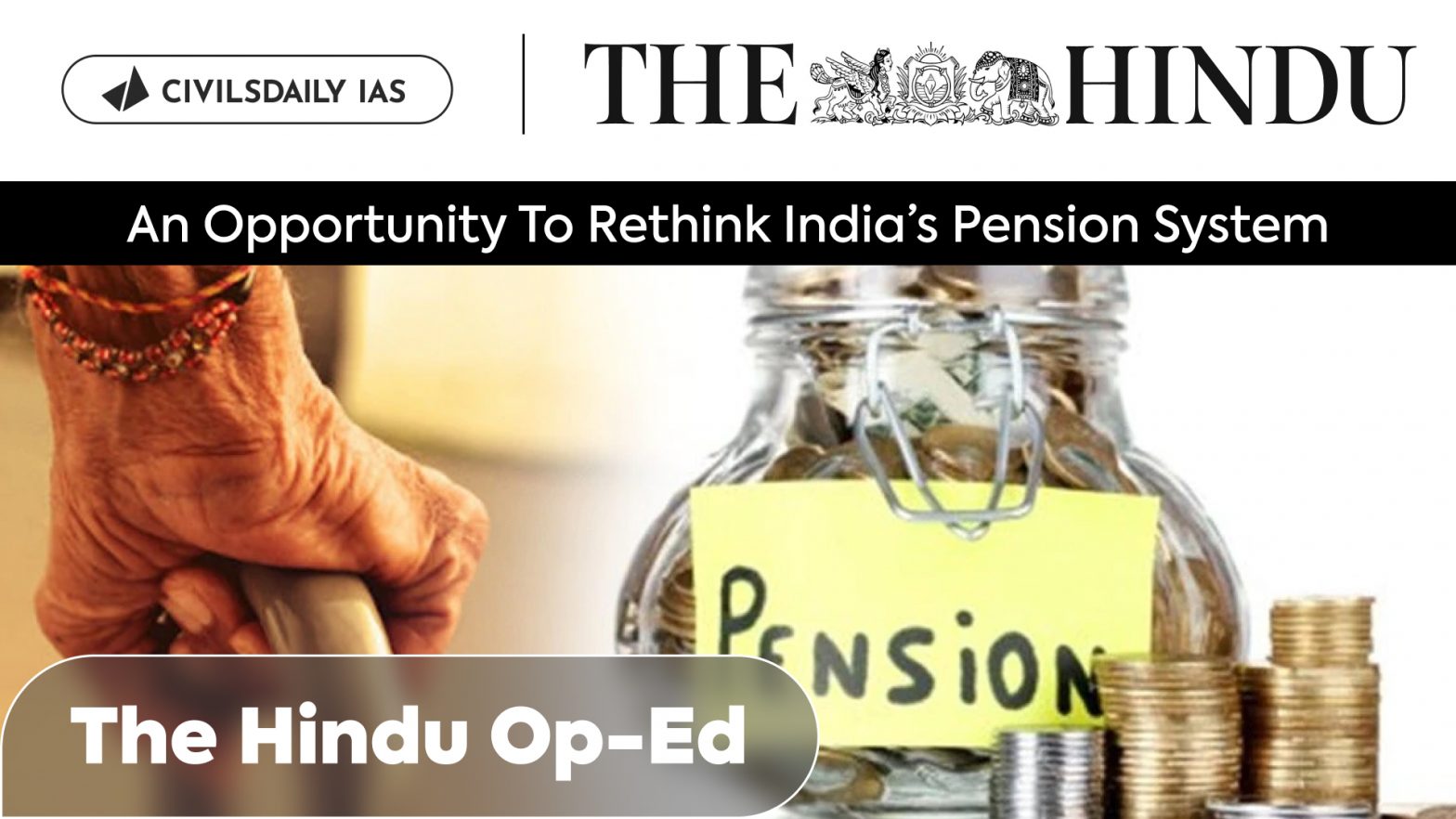| PYQ Relevance: Q). Suppose you are an officer in charge of implementing a social service scheme to provide support to old and destitute women. An old and illiterate woman comes to you to avail the benefits of the scheme. However, she needs documents to show that she fulfils the eligibility criteria. But after meeting her and listening to her you feel that she certainly needs support. Your inquiries also show that she is destitute and living in a pitiable condition. You are in a dilemma as to what to do. Putting her under the scheme without the necessary documents would be a violation of the rules. But denying her the support would be cruel. (UPSC CSE 2016) Prelims: Who among the following can join the National Pension System (NPS)? (UPSC CSE 2017) (a) Resident Indian citizens only (b) Persons of age from 21 to 55 only (c) All State Government employees joining the services after the date of notification by the respective State Governments (d) All Central Government employees including those of Armed Forces joining the services on or after 1st April, 2004 |
Mentor’s Comment: There is an ongoing discussion about the need for a stronger welfare system because many countries are moving away from neoliberal policies. This has brought back conversations about government support for people in need. The proposed Unified Pension Scheme (UPS) aims to offer pensions to everyone, but it has been criticized for needing major changes to truly help retirees. These potential reforms are important as they relate to larger social support and financial security trends, making the editorial very relevant right now.
_
Let’s learn!
Why in the News?
The Indian pension system has evolved through various schemes, notably the Old Pension Scheme (OPS), the New Pension Scheme (NPS), and the proposed Unified Pension Scheme (UPS).
- There are ongoing discussions about reforming India’s pension framework amidst significant socio-economic changes.
Previous Pension Schemes in India:
- Old Pension Scheme (OPS): Implemented before 2004, it guaranteed a defined benefit pension based on the last drawn salary.
- The government was solely responsible for pension disbursement and provided stability and protection from financial market risks. It allowed employees to plan their retirements with financial security.
- Transition to New Pension Scheme (NPS): Introduced in 2004 replacing the OPS, it shifted from a defined-benefit model to a defined-contribution model.
- Both employees and the government contribute to a pension fund invested in financial markets. Pension payouts are linked to market performance, exposing retirees to market volatility.
What are the criticisms faced by the NPS?
- It represents a neoliberal shift reducing state involvement in welfare. It leaves retirees vulnerable to economic downturns and market fluctuations.
- The market-driven model raises worries about the commercialization of public welfare programs. It highlights the weakening of the state’s social responsibility towards its citizens.
| A return to Welfarism • Global Context: The era of neoliberalism is declining, prompting calls for stronger social safety nets. The 2008 financial crisis highlighted the risks of over-reliance on markets. The COVID-19 pandemic intensified demands for government intervention to protect citizens. • Indian Context: India is experiencing a similar push for state-backed welfare provisions. The proposed Unified Pension Scheme (UPS) aims to provide universal pensions while balancing state involvement and market participation. About the newly proposed – Unified Pension Scheme (UPS): • It was introduced by the government in August 2024, replacing the 21-year-old National Pension System (NPS) with a structure closely resembling the Old Pension Scheme (OPS). • The UPS promises government employees a lifelong monthly pension of 50% of their last drawn pay.In the event of a government employee’s death, the family is assured a pension equivalent to 60% of the employee’s pension. • A minimum pension of ₹10,000 per month is assured for those who complete at least 10 years of central government service. • The scheme is contributory, requiring employees to contribute 10% of their salary. The government is to contribute 18.5% of the salary. |
Criticism faced by the Unified Pension Scheme:
- Limited access to the Beneficiaries: UPS promises retirement payouts but offers lower returns than the Old Pension Scheme (OPS), which exposes retirees to market risks.
- A requirement of 25 years of service for full pension disadvantages the late joiners, and concerns about potential underfunding could lead to pension delays.
- Coverage Limitations: Currently, the UPS only covers Union government employees, excluding many public sector workers like teachers.
Need for State Intervention:
- Greater state involvement is necessary to protect retirees from market fluctuations.
- The UPS should consider safeguards, such as a minimum guaranteed pension similar to the OPS, to enhance its viability as a welfare scheme.
Conclusion: The UPS, if properly restructured, could become an important tool in protecting the financial security of retirees and addressing the shortcomings of the NPS, ensuring that India’s retirees are not left to the mercy of market forces but are supported by a robust welfare system.

